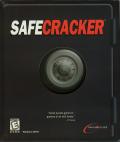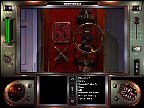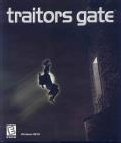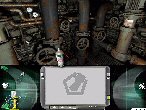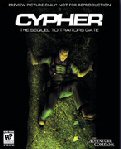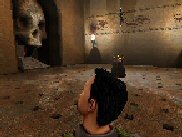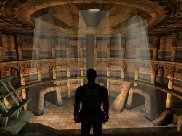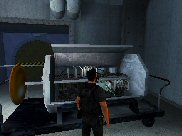|
I
really want to thank you for taking the time to answer some questions
about Traitors Gate II: Cypher. It is a real pleasure to have this
opportunity to get some inside info on what looks like another great
title.
NP: Thanks and no problem.
How long have you
been involved in the game development industry and what do you enjoy the
most about it?
NP: I started
Daydream Software and began developing ‘Safecracker’ in 1995. At the time
I knew absolutely nothing about game design. I’m happy to say this
situation hasn’t changed much. I’m still inclined to work on gut instinct
and try at least to find my own solutions to game design questions, which
will hopefully lead to the gamer having a unique experience in the game
itself.
What is your role within
258 Productions
and the Cypher creative process?
NP: My role is
concept originator, game designer and Creative Director at 258
Productions, my present employer. That means the majority of ideas start
with me, then are sketched by me, and after the process of building,
texturing and scripting, each moment is finally approved by me. As you can
probably guess, I’m one big-headed pain in the *#!!=?.
* laugh * I have heard that
you’ve given up on a possible career as a professional skidoo racer. Any
other perilous moments?
NP: Not recently,
touch wood! It’s an old story…I basically was testing a snow-scooter for a
previous game title and wrapped it around a tree or two at high speed.
Breaking one leg into eight pieces in the process. A painful but potent
lesson: Stick to adventure games!
Well of course!
Many gamers know about Raven from his first mission, Traitors Gate. For
the un-initiated, how would you describe Raven and his mysterious
employers?
NP: Well, Raven is
basically a policeman with an aptitude for archeological conundrums. In
that his job is allied to Pentagon security, he doesn’t deal in what one
would call normal cases, he is almost always to be found sneaking about in
some ancient, derelict ruin while he pursues the scum of the political and
criminal world.
He is proud to be
effective at his job without excessive violence or bad language. Great
agent, but I wouldn’t want to sit next to him at a dinner party.
No kidding.
Truthfully - other than his name, you really never learned much more than
that in Traitor’s Gate. Are we are going to learn anything more about
Raven and his past in this game?
NP: Well maybe not
so much in the game, but I can tell you he is from Idaho and his first dog
was named Troy. He has one hobby, collecting personal artifacts of
infamous historical villains. He has a toothbrush that belonged to Hitler
and a commode that was the personal property of Pol Pot. It’s true I
swear!
OK Look sharp
folks, you heard it here first ! I noticed from the screen shots, that
Traitors Gate II: Cypher appears to be built in 3rd person rather than the
1st person perspective in the first game. Is this the case?
NP: We are using
full 3D for this game, which gives the whole experience a slightly
different feel. The good news for the gamer is that the gameplay can be
far more dynamic and in the 3D environment there is a far better sense of
scale, which suits the scenario perfectly. This is something that 258 and
The Adventure Company are very excited about.
The plot synopsis
for Cypher sounds absorbing. What can you tell us about Raven's newest
mission?
NP: Well, the basic
idea is that some sophisticated scientists in a, shall we say, unfriendly
country have developed a simple but very effective encryption virus. This
they plan to introduce into the communication satellite system causing
untold chaos to navigation, economic traffic, military defense systems
etc.
Being bad guys in the classic sense, these wayward scientists have a
highly sophisticated underground lab. This is seemingly impervious to
attack and full of all sorts of nasty bits and pieces. Raven must find a
way into this lab and obtain a copy of the virus, before seeing to it that
the lab itself ceases to exist.
That sounds great!
The story reminds me of "24" and “The Agency” - perhaps Bond also. Was
there a particular character or movie that was a source of ideas for your
games? If not where do you get the ideas for Raven and these games?
NP: Raven basically
was designed as a character that lives in a world half way between James
Bond and Indiana Jones. I really like mixing well researched historical
content with the high tech spy stuff. This leads to me looking for
scenarios where I can logically mix these two elements.
In
Traitors Gate
other than some limited shots of guards and such that you have to evade -
it was a fairly solitary game. In Cypher, will Raven interact with other
characters? And, if so, can you tell us anything about them.
NP: Well, the lab
part of the game has scientists and armed guards who are not exactly there
to welcome Raven with open arms. The journey to the lab takes Raven
through a lost temple complex where his skills are pitted against the
devious ‘test of character, stamina and strength devices of priests who
died thousands of years ago.
Is it important to
have played Traitors Gate to fully appreciate Cypher?
NP: I don’t
think it’s imperative to have played Traitors Gate to enjoy Cypher. The
only advantage would be to already have an established feel for the
character and perhaps an idea or two on what to expect. Necessary? No. A
good idea anyway? Absolutely!
J
I've heard that this is a
game combing stealth, exploration, espionage and gadgetry. Are there
mechanical puzzles involved in the "gadgetry"? Are there slider and maze
puzzles in the game as well? And, what is meant by an "environmental
puzzle?"
Well that really is a mess
of questions all shoved together. (laugh) Maybe it would be easier to just
describe the sorts of challenges we will come across in the game. :)
NP: Raven has a
number of unique gadgets that he caries with him, designed to help him in
the latter part of the game when he reaches the lab. The ‘gadgetry’ in the
first part of the game comprises of the devises the ancient priest have
constructed to test initiates into their cult. In that the temple complex
has lain undiscovered for so many generations, nothing Raven has in his
backpack can help him here. He must use his inherent skills and his wit to
thwart the challenges that await him.
Does the game
employ keyboard or mouse navigation, or both?
NP: The game has
both keyboard and mouse navigation. We try to keep the keys used to a
minimum, mainly because I have such a lousy memory for such things!
Could you describe
the inventory system and saved game space?
NP: You can save the
game at any point, as long as you’re not in mid action of course. The
inventory is pretty standard in that you start the game with all the kit
Raven has in his pack and then he picks stuff up as he goes along. He also
has an old notebook from an archeological dig just before the First World
War. This is a translation of the ancient priestly writings pertaining to
the temple and contains everything he needs to know to navigate the temple
complex successfully.
TG had a number of
red herring inventory items. Are we going to have the same challenge of
assessing what to add to our over loaded backpack in Cypher?
NP: We have much more to do in this game so I have kept the useless
objects to a minimum.
That’s another
good thing to hear. On a replay of TG a few weeks ago, I discovered that
some items I had in past game play thought useless, actually could be used
to unlock some in-game surprise passageways and such. Will there be hidden
eggs or unlockable features in Cypher?
NP: No comment.
J
AHA… well I’ll
just have to wait for the release on that. I understand that an ancient
Babylonian temple is the lair of the bad guy, though I also saw some
screen shots that seem to show outside areas. How many environments are
featured within the game and how free will the player be to roam around
and explore?
NP: The game is
divided into the two main areas of gameplay, the ancient temple and the
modern lab complex. The outside areas are mainly visited in cut scenes
that set the stage for the game. Once inside the two environments, the
player is fairly free to move as they wish.
From the detail
already visible in the early screenshots - it appears that a good deal of
research must have occurred. Is this true and if so could you tell us
about it?
NP: I always go a
bit over the top on the research side of things. I basically accumulated
all I could on Babylonia and the digs of the early part of the 1900’s. I
learned the cuneiform alphabet and numerical systems and much of this is
now woven into the gameplay.
Many adventure
gamers have concerns over timed sequences rather than action or physical
puzzles. Are there moments like this within Cypher? How about Games Over
moments?
NP: Saving is always
a good idea, especially when a false step can prove fatal. The timed
elements in Cypher are inherent to the construction of the challenge
itself rather than a ticking clock.
I think the
addition of more exciting elements to certain adventure games can be a big
plus. The real issue is how to add elements of stealth and action to the
game without losing the qualities that gamers look for in adventure games.
Your thoughts on this and how is this addressed in Cypher?
NP: It’s always a
problem and all one can do is try and find as perfect a balance between
these elements as possible. When used correctly, stealth, action and
challenge items can be used to drive one another, creating a better
experience for the player.
Have you estimated
Cypher's actual playing time for the gamer?
NP: Estimating game
time is always a tricky thing to do. How long is a piece of string? How
intelligent is a gamer? But I would hazard a guess at between 30-40 hours.
Just don’t email me if you finish the game in ten, send an application to
Harvard instead.
Good answer
(laugh) The graphics look quite impressive from the screen shots I have
seen. What game engine and methods were used in development?
NP: We use an engine
called ‘Gamebryo’ as the base platform and then built onto that ourselves.
All the environments are built in ‘Maya,’ one of the leading 3DF modeling
programs, and then directly exported into the game engine.
I read where the
game has an original sound track. Will there be more music interplay in
Cypher and will it be similar to the rousing score from TG?
NP: The composer we use is very secretive so I actually don’t know the
answer to that yet.
But, yes we will have
a running soundtrack to enhance the gameplay and fell of the locations
within the game.
Will we be spending much
time in the sewers? <g>
NP: No sewers. Which is good, as I couldn’t stand the stench!
Sorry about that –
I just had to ask. Heh-heh If you had to sum it up - what makes Cypher
stand out from the rest of the games out there?
NP: If I had to pick
something, and I guess I do, I would go for the contrasting elements of
historical content and the high tech spy story. This allows me the
potential for creating cool and original challenges for the player and
gives them an insight into worlds that they could otherwise only find in
between the covers of some dusty old book.
Thank you so much
for sharing your insight about Cypher. Any last thoughts, for the gamers
out there?
NP: Don’t be shy in
using your brainpower, it’s the most lethal weapon you have.
Which reminds me, I
must go and stock up on ammo.
|
